Susan Maxwell's Blog, page 2
June 13, 2024
Reviewing the situation...
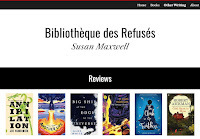 For the past few weeks, fiction-writing has taken a back seat as I focused on a course on reviewing given by the very knowledgeable Dr. Tapasya Narang. I already review for
Inis
magazine and on my website (https://tinyurl.com/tbecvnfc), but want to open up new possibilities by putting my non-fiction work on a sounder footing. Strangely, the course did not address the matter of finding all the extra hours for this endeavour!
For the past few weeks, fiction-writing has taken a back seat as I focused on a course on reviewing given by the very knowledgeable Dr. Tapasya Narang. I already review for
Inis
magazine and on my website (https://tinyurl.com/tbecvnfc), but want to open up new possibilities by putting my non-fiction work on a sounder footing. Strangely, the course did not address the matter of finding all the extra hours for this endeavour! June 6, 2024
A Personal Anthology
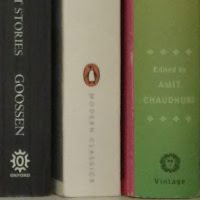 The twelve short stories I selected as guest editor on A Personal Anthology: https://tinyurl.com/wyn52rkw. This excellent series is curated by the author, critic, and lecturer Jonathan Gibbs; each Friday, a different editor chooses and writes about twelve short stories. I was delighted to be given the chance to be added to the roll-call.
The twelve short stories I selected as guest editor on A Personal Anthology: https://tinyurl.com/wyn52rkw. This excellent series is curated by the author, critic, and lecturer Jonathan Gibbs; each Friday, a different editor chooses and writes about twelve short stories. I was delighted to be given the chance to be added to the roll-call.
April 26, 2024
Five For Friday #28
 Three cheers for Voyager 1’s flight team—they got V1’s chip working again!
Three cheers for Voyager 1’s flight team—they got V1’s chip working again! Voyager 1 has to be one of the most inspirational of human achievements. It was built for a five-year project to collect data about the two gas giants, Jupiter and Saturn. It was launched in 1977, and, with less processing power than a contemporary mobile phone, it has been sending data back to NASA for the past 47 years. It crossed into interstellar space in August 2012, and is currently about 15 billion miles away from Earth.
In November of last year, it had begun to return gibberish, and scientists naturally assumed that the spacecraft was simply feeling its age. But enquiring minds still needed to know, so the flight team kept working at the problem, and sent a poke command (which accesses and modifies a specific memory cell) that prompted Voyager to send back a reading, apparently in the wrong format, that an engineer was able to decode.
From there, the flight team was able to resolve Voyager’s problem, and three days ago, they received an intelligible response from V1 about the system’s state of health. Now, that is remote working.

2.Things DiscoveredA new word: my continuing adventures in vocabulary acquisition.
enthean
I came across this in Philip Hobsbaum’s Metre, Rhythm and Verse Form; it is ‘a rare word’ and means ‘inspired by an indwelling god’, according to Hobsbaum. Of course I will find an everyday use for it.
3.Things Goggled At In AmazementThe in situ rotation of an entire building in 1930.
In November 1930, the Indiana Bell building was moved 90 degrees, while all 600 employees continued to work uninterrupted and undisturbed, by Kurt Vonnegut’s father. I mean, he was supposed to, he didn’t just sneak in and do it on the sly. He was an architect working with his grandfather’s company (Vonnegut, Bohn, and Mueller) who had built the telephone exchange in 1907.
When a larger building was required, Vonnegut proposed that instead of demolishing the existing building, it be jacked up, put onto rollers, and rolled to a new position. The building weighed about 11,000 tonnes, and it took 34 days to shift it around. There was no interruption to supplies of gas or electricity, nor to sewage disposal, and members of the public as well as employees still had access to the building.
4.Things AttendedAn online event for writers run by the British Fantasy Society.
The British Fantasy Society runs regular on-line events on all sorts of topics to do with fantasy, including workshops, panels, interviews, and readings. I attended their recent event The Book Journey on 13th April. It was lively and informative, with an excellent mix of panellists (see the event page for details).
There were panels on editing, marketing, and artwork, an interview with an agent, and some very interesting readings of their own work by various authors, all very ably chaired by PS Livingstone (herself an author).
5.Things EncounteredAn unusual astronomical phenomenon.
A massive hot ball of plasma, powered by nuclear fusion reactions at its core, 8 light-seconds from Earth, and though always present, rarely seen in Ireland without its filters of dense cloud or rain.

April 24, 2024
Short Stories 5: Hallowtide Boar
Hot on the heels of the previous post about the short stories contained in my collection Fluctuation in Disorder (and also available as individual e-books), here is yet another, with a very different style and content.
Hallowtide BoarB takes a short-cut through the Botanic Gardens on her way to the office, in the misty early-morning darkness of Hallowe'en. She strays from the path, and encounters a work of art that has taken on a form far removed from its daytime appearance.This is experimental story, which I wanted to make thoroughly disrupted, intangible, and irreal. The events are presented without explanation, the reality-status remains undeterminable.
The balance between the recognisable, ordered world of consensus experience and the unexplained, uncanny one is in the process of shifting. The ordered world is unstable from the start, with the details of the everyday realm obscured by fog. That B is perhaps primed to respond to these intrusions of the uncanny is hinted at by her speculations about the Taurid meteor shower, that is ‘invisible to the shrouded city’ but which occupies her mind as she walks; or by her experience of disrupted time and space, when she seems to see the escaped parakeets miles after she had passed their tree.
The artefactual Boar is much more concrete than B. It is the Boar that appears to have autonomy—the Boar takes an action that B does not understand but which profoundly affects her. Many of her own actions are so routine as to be automatic (‘she had walked the memory into her muscles’); others are taken only with the permission of or at the insistence of external forces: entering the building she works in, for example, requires an electronic pass, while her reluctant engagement with office birthday celebrations are a social obligation.
Once she arrives in work after her encounter with the boar, B starts to experience her everyday, familiar life in a very heightened way, her state of mind now receptive to weirdnesses in her surroundings—a state of mind that seems to be at once contagious and shared, as others apparently become affected. books2read.com/HallowtideBoar
books2read.com/HallowtideBoar
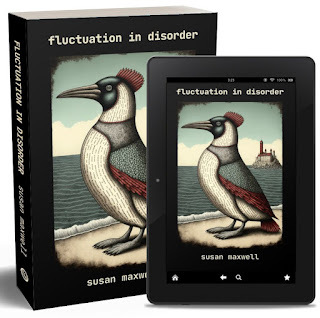 books2read.com/fid
books2read.com/fidApril 22, 2024
Short Stories 4: Thicker than Blood
I had started a while ago to post brief pieces on the short stories contained in my collection Fluctuation in Disorder; here is the next in the series. Each story is also available as an individual e-book priced at €/£/$0.99—the stories are quite wide-ranging in style and genre, so this allows readers to pick and choose the ones they most like the look of. You can find the details of all the individual stories here.
Thicker than BloodCliona is a vampire, though she has adapted to ocean life rather than prey on human blood. Centuries later, she finds that her new home is being destroyed, as humans begin to exploit the power of the ocean as a cheap source of energy to fuel endless wars. This is a side-story to the Hibernia Altera sequence, set in the Outland.'Thicker than Blood' started out as a back-story for a character in a short novel I outlined many years ago, but have not (yet) written. Although it was written before the worlds of Hibernia Altera, Muinbeo, and the Outlands were developed, the world of the story is an ancestor of the corrupt, post-catastrophic world that emerged when, within that later mythos, the Pharaoh’s Court degenerated from the nexus of escape from invasion into a self-serving gravy-train. In this short story, it is an explicitly dystopian world where the undeclared ideologies that lie behind the structures of ‘real’ life are flayed and exposed.
The idea I had for the novel involved the re-location of the protagonists into the oceans, as a way not only of surviving but of hiding and regrouping before openly opposing those in power. At the time, I did not appreciate the impact on the oceans of environmentally hostile industrial processes. I saw it as a sanctuary, and also as a potentially endless source of both inspiration and opportunity for invention, containing as it does some of the last places on Earth that are still not fully explored or understood.
It seemed necessary that any humans adapting themselves to life in the water would benefit from a contact with whom they could communicate, but why was the contact there, and why would they care about life on land? Cliona’s dramatic turn to the sea was the answer.
 books2read.com/ThickerThan
books2read.com/ThickerThan
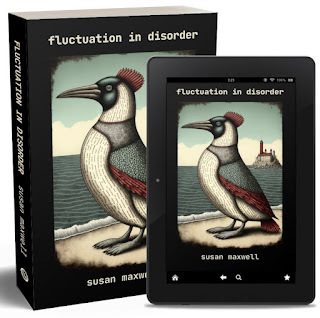 books2read.com/fid
books2read.com/fidApril 19, 2024
Five For Friday #27
We launched our planned programme of regular walking last Sunday, trying to get back into good habits. Lough Boora is a great place to get back on the horse (as it were), because each of the walks is between one and three hours, so you could spend most of the day there if you would like, or just do a short walk. Either way, the walks are on the flat, as you can expect on bogland, and the ground reasonably soft underfoot (the walks are on former railway tracks, so are harder than just peat).
I will never not regret that Ireland gives walkers such poor access to the countryside. Unlike the UK and a number of other countries, there are virtually no local public rights of way, let alone a right to roam, so there is no option but to drive to walking routes. But still, Boora Bog is a favourite (along with Glenbarrow), and has outdoor artworks and a small but comfortable and airy café. Here’s some photos from a previous visit—far too cold last Sunday to risk taking my hands out long enough for a photo.
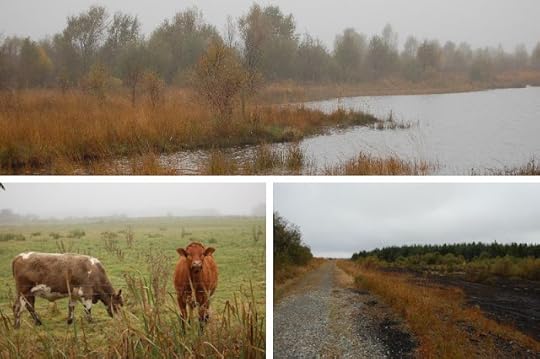
2. Things SpectralReading Avery Gordon and M. John Harrison
I started reading Avery Gordon’s Ghostly Matters, about haunting and sociology, for an article I am writing on archives as Gothic spaces. Gordon discusses haunting as an expression of power, especially abusive power, but in her introduction writes of the ghost that the “whole essence … of a ghost is that it has a real presence and demands its due, your attention.”
Coincidentally, I read M. John Harrison’s blog entry on his days as a ghostwriter, and his observation that he had been a ghostwriter on his own 'anti-memoir' Wish I Was Here, on behalf of all his past selves. Ghosts and hauntings are resonant words. Also coincidentally, March’s short story—I am trying to write one a month this year—features the ghosts of past selves, too.
3. Things (or, rather, Thing) Watched and Listened ToJohn Carpenter’s The Thing / Weird Studies podcast episode on the film
In preparation for Weird Studies’ episode (#160) on John Carpenter’s The Thing, I watched the film for the first time on Saturday. I realised that I had been expecting something very schlocky, and it might have been because of the title: 'The Thing' has an off-hand, can’t-be-arsed feel to it, a sort of air of the budget not stretching to details. But in fact, it was spot-on for something that seemed to exist in a state of mutation into something else.
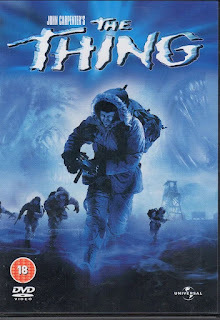 The opening sequence is very beautiful, as faintly eerie expanses of snow tend to be, and immediately strange, because there appears to be people in a helicopter hunting a Siberian husky dog. The dog starts off conceptually in a sort of passive, malleable state where what it is depends on the humans around it: it is a poor wee hunted thing, a rescuee, Man’s Best Friend. But then there is a shot of it looking out of the window, and turning away, then trotting off into other rooms in the research station, and the viewer realises that the dog has a discomfiting agency. I love the way everything is pared right back—people called things like Doc and Mac, no-one having any backstory—except for the eponymous thing itself, which is everything all at once; the one is all quiddity, the other nothing but haecceity.
The opening sequence is very beautiful, as faintly eerie expanses of snow tend to be, and immediately strange, because there appears to be people in a helicopter hunting a Siberian husky dog. The dog starts off conceptually in a sort of passive, malleable state where what it is depends on the humans around it: it is a poor wee hunted thing, a rescuee, Man’s Best Friend. But then there is a shot of it looking out of the window, and turning away, then trotting off into other rooms in the research station, and the viewer realises that the dog has a discomfiting agency. I love the way everything is pared right back—people called things like Doc and Mac, no-one having any backstory—except for the eponymous thing itself, which is everything all at once; the one is all quiddity, the other nothing but haecceity. (It was in discussing the film that Weird Studies co-host J.F. Martel characterised the Thing as possessing haecceity (individual or particular quality) but not quiddity (universal or essential quality). It sounds vaguely like an insult of the form ‘all mouth and no trousers’ or ‘all fur coat and no knickers’—in future, I will use it as such: “Oh, him—he’s all haecceity and no quiddity!” There’d be no coming back from that…)
4. Things LearnedA minor undersea mystery solved?
On another visit to the natural world, this time indirectly, an article from Hakai Magazine, which “explores the science, society, and the environment” of coastal life around the world. For ecologically obvious reasons, their articles, though often fascinating accounts of ingenious ways to ameliorate the problems faced by ecologically-stressed coasts, do not always make cheerful reading. This one recounts how a concern that methane was seeping from the floor of the North Sea is shifting its attention to porpoises.
"When he first saw the pockmarks, Jens Schneider von Deimling, a marine geophysicist at the University of Kiel in Germany, wondered whether they were evidence of methane seeping from the sediment. … But the physical appearance of these seafloor marks weren’t like those seen at typical methane seeps. … It looked as if someone had disturbed the sand from above."
5. Things BakedBallymaloe House brown yeast bread
We tend to bake our own bread at home (though shop-bought batch loaf is always something of a treat); one of the more faffy aspects of this is kneading the dough and waiting for it to rise. Inspired by an offhand comment by my brother-in-law that his (delicious) bread was from a Ballymaloe recipe, we trawled the interwebs and came up with the goods.
The new recipe has three notable aspects that differentiate it from the basic one I formerly used—it does not require kneading, it takes significantly less time to rise, and most importantly, it tastes far better, due to the addition of molasses or treacle. I used an adapted recipe from Building Feasts recipe site rather than the original Ballymaloe recipe, as the former uses instant yeast which is easier to get.
April 12, 2024
Five For Friday #26
David Mitchell’s Cloud Atlas has been on my tottering TBR pile for an awfully long time now—one day, it will make it to the top. But I have only recently discovered that cloud atlases are actually a thing, via the excellent SOCKS website/blog, “a non-linear journey through distant territories of human imagination” written by Italian architects Mariabruna Fabrizi and Fosco Lucarelli.
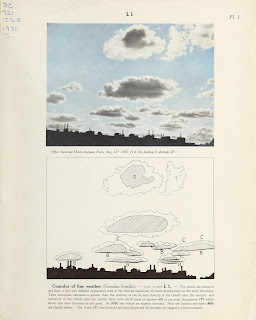 "A cloud atlas is a visual depiction of various types of clouds accompanied by their classification and nomenclature. Cloud atlases were primarily developed starting in the 19th century and utilised for training weather forecasters and meteorologists."
"A cloud atlas is a visual depiction of various types of clouds accompanied by their classification and nomenclature. Cloud atlases were primarily developed starting in the 19th century and utilised for training weather forecasters and meteorologists."I frequently make quick sketches from the kitchen window to try and capture the often beautiful light and cloud formations in the skies visible from that vantage point. The examples from a 1930s cloud atlas provided in the blog post are intriguing as an aid to recording these fleeting skyscapes from an artistic rather than a scientific point of view (friends, I am no meteorologist: there, I've said it!)
2. Things Poetic‘Darkness’, in which Byron goes all grimdark
"I had a dream, which was not all a dream.
The bright sun was extinguish'd, and the stars
Did wander darkling in the eternal space,
Rayless, and pathless, and the icy earth
Swung blind and blackening in the moonless air; "
Since I didn’t entirely snooze my way through school and university, I have a certain basic familiarity with some of Byron’s work. However, I had not come across his poem ‘Darkness’ until I read a post on Mastodon by Dr. Amy H. Sturgis, who posted about the poem in relation to a course she was teaching on Mary Shelley’s The Last Man.
A bit of further digging revealed that Byron’s poem, like Shelley’s Frankenstein, was written in 1816 in the literal shadow of the ‘Year without a Summer’. The 19th century saw the genesis of modern western speculative fiction in a fusion of the romantic sublime, scientific discovery, philosophy, and the visionary and/or apocalyptic.
3. Things to FollowA Personal Anthology, curated by Jonathan Gibbs
"A Personal Anthology is a regular bulletin from a series of guest contributors, each of whom is given the opportunity to dream-edit their own personal anthology of short fiction. The task is to pick and introduce a dozen stories."
I was familiar with Jonathan Gibbs as an author, having read his novel Randall, but he is a man with many strings to his bow. I have only recently come across A Personal Anthology, which is a great way to discover short fiction that might not otherwise have come within range of my radar. Among the luminaries who have contributed anthologies since the project began almost eight years ago are Rónán Hession and M. John Harrison.
4. Things Discovered 2: ‘Hungarian Oranges’My continuing adventures in vocabulary acquisition.
This time, it is a new phrase that has caught my attention rather than a new word—and a phrase in translation, at that.
As a smallholder interested in trying to understand how to minimise the negative aspects of my impacts as a human on the rest of the natural world, I follow the work of technology writer Kris De Decker in Low-Tech Magazine and his shorter pieces in the associated No Tech Magazine. A post in the latter, in which De Decker quotes Michael Saalfeld, provided the new-to-me phrase; the context is a failed project to grow warm-climate fruits in Stalinist-era Hungary:
"[T]his was so unsuccessful that it spawned a liberal political magazine by the name 'Magyar Narancs' (Hungarian Oranges) to refer to the goofiness of the Hungarian communist system of that era. … Apparently 'Magyar narancs' is still used in Hungary as an expression meaning 'an impossible task' or 'a stupid enterprise which will doubtless fail.' "
5. Things to AttendAn online lecture series on Alchemy in Art and Culture
I try to keep up with what’s going on so that I have something other than the grumpy prejudices of my curmudgeonly mind to inform my writing and my knowledge of the world about me. This means subscribing to various newsletters and feeds, not all of which turn out to be of interest or that I get the time to check.
Irritatingly, it is often the case that the most promising items end up in the latter category, as in the present instance: it turns out that I have already missed the first three lectures in what looks like a very interesting series by Prof. Evans Lansing Smith, provided by the inestimable Last Tuesday Society. However, I will be able to pick it up with the forthcoming lecture on ‘The Splendor Solis and Nicholas Flamel’:
"The presentation continues with a focus on one of the most famous and splendidly illuminated texts of the Hermetic Renaissance, The Splendor Solis, and the transition to the Rosicrucian era exemplified by the narrative and iconography in the work of Nicholas Flamel, with its synthesis of alchemy and the Christian Apocalypse."
 from Salomon Trismosin's 'Splendor solis' - Wellcome Collection - CC BY
from Salomon Trismosin's 'Splendor solis' - Wellcome Collection - CC BYMarch 24, 2024
Review: The Hour of the Star
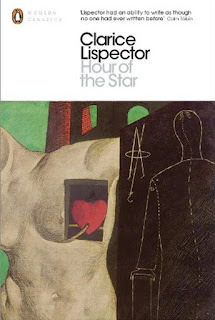 This is Lispector’s last book (she died the same year that it was published). In his essay, 'A Passion for the Void', Colm Tóibín describes the novella as the book in which “all her talents and eccentricities merged and folded”, and, although it is not autobiographical, he suggests it is “an exploration of a self that is sometimes glimpsed but never known.”
This is Lispector’s last book (she died the same year that it was published). In his essay, 'A Passion for the Void', Colm Tóibín describes the novella as the book in which “all her talents and eccentricities merged and folded”, and, although it is not autobiographical, he suggests it is “an exploration of a self that is sometimes glimpsed but never known.”I did not immediately love the book—though it was kind of touch and go—stimulating and intriguing though it is. I am more at home with irreal or absurdist writing that in a way riffs on an idea, gives the reader a thread to cling to regardless of how unpredictable the story that follows and stays with the same idea, however absurd or disconcerting it might be, for long enough that the reader can see the landscape. Lispector disconcerts by being suddenly in one place, then in another, like a springtail, without any evidence of motion in between. “If you see what I am saying, fine,” the narrator says at one point, “if you don’t, that’s fine, too. But why am I bothering with this girl when what I want more than anything is purely ripe and golden wheat in summer?”
There are two things going on in the novella. One is the story of Macabéa, “ugly, underfed, sickly and unloved,” told by her boyfriend Rodrigo, and the other is the story of writing the story. Both are brilliant in their way, but possibly too strong a meat as a first foray into Lispector’s writing. Toibín’s illuminating essay is the introduction to the book, and if this work is the one in which encapsulates Lispector’s writing style, then perhaps it will be better appreciated—by me, at any rate—when these “talents and eccentricities” have been encountered in a less concentrated form.
[Tóibín’s 'A Passion for the Void' is also available as an article in the Guardian.]
March 15, 2024
Five For Friday #25
In early Autumn, I picked a load of apples to dehydrate and process in various other ways. One of those ways was a new departure, involving the purchase of a small home cider press. The apples were sitting around for a fair while in crates before we finally got around to actually pressing them and fermenting the juice, but the resulting exclusive small-batch artisanal hooch is now bottled up ready for the Summer. Who needs absinthe* when there is home-brewed cider?*See (4) below.
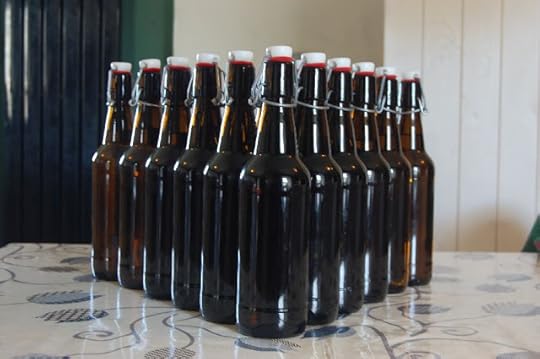
2. Things Discovered 1: WordsMy continuing adventures in vocabulary acquisition.
A new word I encountered in Architext: An Introduction by Gérard Genette (trans. Jane E. Lewin): misprision.
In British English, it has an archaic meaning of contempt, or failure to appreciate something; while in the United States, though it retains its meaning of contempt or scorn, its more usual meaning is a legal one, that of failure to report an act of treason, or the deliberate concealment of a felony. It can also mean misconduct in public office, or seditious conduct against a government or court.Wikipedia further differentiates between negative misprision (which includes concealment of treason) and positive (seditious conduct). In its ‘positive’ category, Wikipedia includes not only maladministration in high office but also “contempt of the sovereign”. For some inexplicable reason, this combination of examples brought before my reluctant mind’s eye the image of Boris Johnson.
Oddly enough, each of the dictionaries I consulted had as the last option on their list the only definition that made sense in the context of Architext, which was ‘misunderstanding’. Unless, that is, I am to be treated to Genette explaining how the history of poetics is “one of astonishing confusions and concealment of treasons/contempt of sovereigns”, which would have the advantage of being unexpected…
3. Things HeardWeird Studies episode 57: Box of God(s): On 'Raiders of the Lost Ark'
Weird Studies is one of my favourite podcasts, an intensive work-out for the intellect with hosts Phil Ford and J.F. Martel as personal trainers / hierophants. Unable to listen to a couple of recent episodes because they depend on knowing about a film I haven't yet seen (John Carpenter's The Thing—I know, how can I not have seen this?) or would be full of spoilers for something on my TBR list (Victoria Nelson's The Secret Life of Puppets), I turned to the backlist and their 2019 exploration of an old favourite.
"What does the Ark of the Covenant signify? What does it contain? What happens if you open that box of god(s)? And whose god is this, anyway? These are questions that have puzzled theologians and mystics for centuries, and Steven Spielberg's great work asks them anew for an age gone nuclear."
Raiders is more than just a ripping yarn, though it's certainly that too.

4. Things To Be ReadThe Haunted Writings of Lionel Johnson, the Decadent Era’s Dark Angel. Edited by Nina Antonia. Strange Attractor: 2018
I had not come across Johnson before: like many interesting new discoveries in the byways and margins of literature, this book has been brought to my attention by Mark Valentine's inestimable Wormwoodiana blog.
“Johnson should have been one of the great poets of the age but was already drinking eau-de-cologne for kicks while a teenager at Winchester College. His attraction to absinthe damaged his fragile health and cast him forever into a waking dream of haunted rooms and spectral poetry. A habitual insomniac, he haunted medieval burial grounds after dark, jotting down the epitaphs of the gone-too-young, as if anticipating his own early demise at the age of 35—falling from a bar stool in a Fleet Street pub.”
Perhaps fortunately, my literary influences lie more in the œuvres than the lives of other authors…
5. Things Discovered 2: SoftwareAn online tool for creating 3D mock-ups of book covers.
I came across this nifty tool from Derek Murphy of Creativindie when I was looking for a means to fancify a book cover image for incorporation into a promotional thingy. Reader, you’ve guessed correctly: this is another shameless plug for my newly released novel A Wild Goose Hunt , the second in the Muinbeo Chronicles series inaugurated with Good Red Herring .
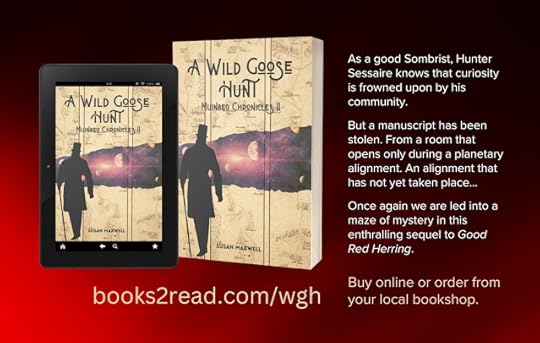
March 8, 2024
Five For Friday #24
This was not a new encounter in that I had heard of them, but I had never gone to one before. Little Free Libraries was an initiative of a Wisconsin man, Todd Bol, who in 2009 made a model of a small schoolhouse (his mother had been a teacher), put books in it, and put it in his yard. In conjunction with Rick Brooks of University of Wisconsin-Madison, he saw the possibilities of the little libraries for encouraging social and community networks.
Inspired by philanthropist Andrew Carnegie’s mission during the early twentieth century to provide over 2,000 free libraries across the world, Bol and Brooks set a goal of matching Carnegie’s libraries by 2013. They reached their goal (2,508 little free libraries) in August 2012. The point of the libraries is to act as a focal point for communities. Books are donated, people borrow them, to return them later or pass them on to someone else. There are over 150,000 registered libraries in over 120 countries globally.
One of them is in the village here, set up during the pandemic. I had seen it, but not used it. Last Sunday, there a cake sale held in the village to raise funds for the refurbishment of the community hall; not only a good cause, but the cakes are always particularly lovely, and it has the distinction of being the only event here that ever starts on time. We dropped into the shop/post-office before heading home, and I took the opportunity to have a look in the library, and came away with a hard-copy of The Master and Margarita (M. Bulgakov, trans. Peavar and Volokhonsky). Like Arnie, I'll be back.

2. Tá Sé Mahogany GaspipeIt sounds like a word, but what does it mean?
A new word during the week: sotoeis. An archaic word, found in one text only, the now fragmentary Book of the Copper Yew (Lebar an Buí-Eo). The manuscript itself is a strange compendium of historical fact (including an account of the anchorite Benjamin Bulbanus building a small curragh on Lough Derravaragh); paradoxographical tales (including the end of an account of a visit to the Isle of Apples, in which the narrator returns home by falling over a threshold, ‘thit mé thar an tairseach); and folklore (such as the tale of the Running Man of Lough Farderg).
The word sotoeis seems to be a verb, meaning to spoil a child or a pup, to teach bad manners through lack of discipline, to raise a sotaire, an upstart, or brat. Some scholars (Porphyrogenitus, Brother Barnabas, and others) argue that this interpretation is entirely wrong, and put forward the claim that sotoeis is related to the English word, soterial (in theology, meaning relating to salvation). The word occurs just once in this text, and neither definition makes much sense in its context, which is a story about a cow, a map, and the Queen of Sheba.
Oh, alright. I made it all up. 'Sotoeis' should have been ‘stories’, but I was typing my article too fast, and too inexpertly. But it looked like it should mean something…
And it did lead to two new (real) words of the week: soterial, and sotaire.
3. Things Seen Through the WindowPlace names on the Red Line
I have mentioned before the fact that place names around Ireland are intriguing because they are often neither in Irish nor in English, and require translation before the meaning of the anglicised Gaelic terms can be understood. Not so the Luas line towards Tallaght, whither I was bound on Tuesday, on which I was struck by the number of places with colours in their names: Blackhorse, Red Cow, Bluebell, and Goldenbridge. All in a row, they sound practically mythical.

4. Things Not Seen, UnfortunatelyAn exhibition of the work of Švankmajer and Švankmajerová
Belatedly reading a February 16th tweet from John Coulthart in which he has received copies of Phosphor, a publication of the Leeds Surrealist Group, one of which contains an interview with the Czech surrealist film-maker and artist, Jan Švankmajer.
There were a number of comments on Coulthart's blog-post, mostly about Prague, but one offering as a lure to visit Kutná Hora the fact that there is an exhibition of the work of both Jan Švankmajer and Ewa Švankmajerová, to celebrate the former’s 90th birthday. The exhibition started on 2nd March and goes on until the beginning of August, so if I win the lottery in the meantime, there’s a destination, ready and waiting.
I visited Prague many years ago—Quettopolis in Hollowmen is partly based on it—and one of my favourite memories of it is of the puppet-performance of Monteverdi’s Orfeo, with the most gloriously mischievous serpent.
5. Things NoteworthyInternational Women’s Day

Last, but very far from least, it is International Women’s Day today. One of the reasons I am drawn to speculative fiction is that it does not take the world as presented to us as reflecting the full extent of its reality or potential. Layers of conventional expectations and conditioning distort or obscure our vision of what is and what might be: speculative approaches question and undermine these carefully constructed consensus ‘realities’.
Science fiction is often particularly effective, as it can show a different acceptance of ‘the way things are’ across time and space, taking completely for granted what would appear utopian or polemical in a contemporary setting. So Star Trek, in the 1960s, showed a black woman officer on the command deck of a military vessel as something utterly normal—placing the onus on those who resist this depiction to come up with cogent reasons (spoiler alert: there are none) why this could never be.
And just so the giants of the SF screen don’t hog all the limelight, I will list ten women authors whose work I particularly admire and/or enjoy. After all, in my life so far, I have been called upon more often to wield a pen or a word-processor than a phaser (though hope springs eternal, and all that). Some of these writers, like Agatha Christie, have been my companions since childhood; others, such as Olga Tokarczuk, are more recent acquaintances.
Agatha Christie — Susanna Clarke — Louise Glück — Shirley Jackson — Tove Jansson — Ursula Le Guin — Muriel Spark — Donna Tartt — Olga Tokarczuk — Virginia Woolf



